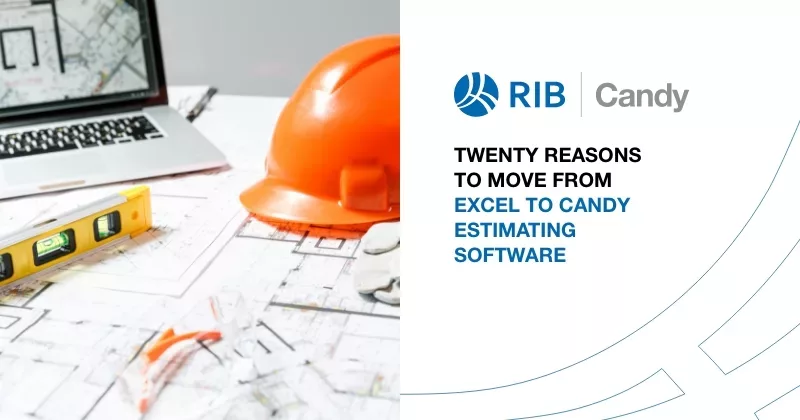10 mins read
Our 10 Steps Guide To Getting Your Estimate Right First Time

Estimating is a fundamental business function for Contractors, yet many small and medium enterprises (SMEs) in the building sector fail to pay sufficient attention to this process. Whilst these checks and balances may seem like unnecessary work, these are vital steps that must be managed correctly to ensure success, as bidding too high will lose the contract and bidding too low will result in reduced margins or even major losses. With these points in mind, here is a 10-step guide to getting your estimate right the first time.
Know your strengths
Be aware of the project requirements and the value you can add to avoid costly mistakes and potential reputational damage.
It is also important to understand the programme requirements and any restraints that may be imposed. You should also know your capacity and current workload of ongoing project and projects in negotiations to avoid over committing resources.
Specialist areas of the project which your firm cannot undertake should be sent out to reputable subcontractors with a proven track record in terms of financial capacity and delivery for quotations. This will all sum up to your final bona fide contract sum.
Know the specifications
Always review construction documents closely, including both the general and specialist specifications. Make sure you understand both the practical aspects (materials and installation techniques required) and the contract details (allocation of responsibilities between stakeholders, payment schedules and insurance). Failure to be properly informed can result in unexpected costs and a reduced profit margin.
Draw your own conclusions
You should also review the relevant technical specifications in conjunction with the architectural, structural and specialist consultant drawings, and understand how your work will be integrated into the overall project. Look carefully for potential hidden costs and flag any discrepancies between the drawings and specifications, if there is any doubt, ask by sending out queries to the potential client to seek clarity. Please remember that a submitted bid will be deemed to be inclusive, even if you have overlooked anything.
Prepare for take-off
Fixed price contracts will require a Construction take-off. This is a vital step that involves quantifying everything involved in your scope of work. First measure the item quantities, then price the Bill of Quantities using approved Construction software to establish the Resources to be used in the Project. The compiling of an accurate Bill of Quantities from a take-off is the basis of your overall cost estimate. Be as thorough as possible in describing all bill items and quantifying them. Double check the take-off bill items to ensure accuracy. A second set of eyes is important, a Senior Quantity Surveyor should check quantities derived from the preliminary take-off of Junior Quantity Surveyors.
Do your sums
It is good practice to use production rates and waste allowances from old jobs when pricing each Bill Item. This can be done by importing or copying rates from a company Master Bill. When using the Master Bill, it is important to update all resource rates to current prices.
Other direct costs that may be incurred must be factored in, including equipment rental and the hiring of specialist subcontractors. Take into consideration the size of the project and determine the economies of scale which your firm might benefit from, ie Large scale projects which require the recuring use of on item, ie formwork, can be priced strategically to reduce the overall cost of formwork, the purchase of such equipment may be more cost effective.
Guard your profit margins
Your construction estimate should allow for a profit margin to justify the risks you are taking and enable you to grow your business. Overheads such as project management services and the delivery of materials could also erode your profits. Negotiate strategically with suppliers and any specialist subcontractors on all quotations which will be submitted to your firm. A good and mutually beneficially negotiation will go a long way in reducing your overall cost of the project and protect profit margins as well.
Write to be understood
Your construction method statement should mirror the language of the construction specifications and drawings. In the interests of transparency and accountability, list each task as a line item rather than presenting one combined total. This will also ensure that nothing gets overlooked and leave little to no room for ambiguity or assumptions.
Determine the contract type
There are three main types of construction contract:
- Design & Construct: The risk of design and price firmly sits with you.
- Cost plus: The client accepts all costs and assumes the risk while paying you an agreed percentage.
- Provisional BOQ: The client accepts the risk of quantities in the Bill Quantities whilst you accept the risk of contract delivery and the submitted rates of the Bill Items.
Leave room for changes
Use formal construction change orders to ensure that you receive payment for any additional work authorised by the Principal Agent and not included in your original estimate.
Invest in construction estimating software
Modern construction software takes guesswork out of the equation by eliminating errors and delivering more accurate estimates for more profitable contract bids.
Drawing on our extensive experience in the construction industry and leveraging the power of the cloud; RIB CCS Candy is the estimating, planning and project control solution that empowers you to streamline your entire estimation process for even greater success.
Most Recent
10 mins read
10 mins read
16 mins read
15 mins read

Ebook











